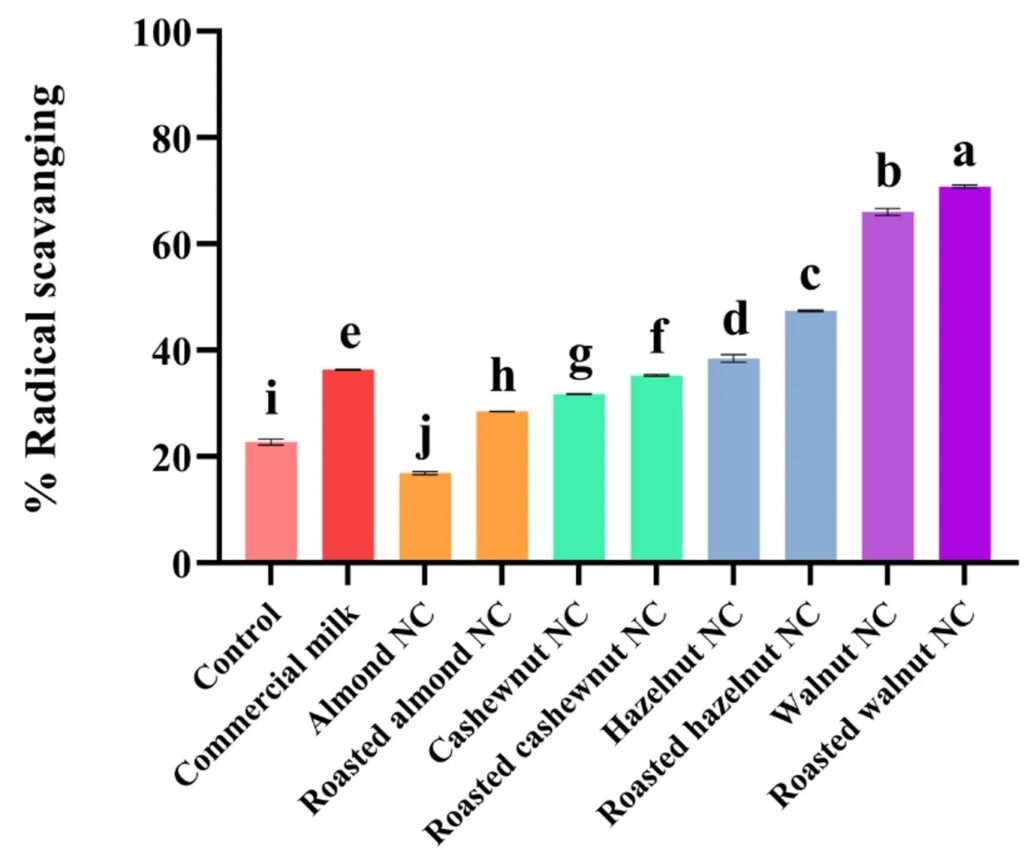
With plant-based milk now a mainstream option for coffee drinks, a team of researchers analysed the sensory performance of various nut milks in search of the best latte.
Walk into a coffee shop in most tier 1 and 2 cities globally – be it a chain or an independent specialty store – and they’re likely to have at least one dairy alternative option.
There’s no denying the ubiquity of non-dairy milk, the largest segment in the plant-based food industry, and perhaps the broadest too. What started as a quartet of soy, almond, oat, and coconut has turned into a diverse mix of pistachios, sunflower seeds, pecans, and even potatoes.
There are so many plant-based milks to choose from, with each offering different functionalities. Some are better for cooking and baking, others for barista-style coffee drinks, and yet others for drinking straight up.
Globally, sales of plant-based milk grew by 5% last year to reach $22.4B, and the coffee industry has a big role to play here. A 2024 survey found that more than half (51%) of coffee drinkers now prefer non-dairy milk in their drinks.
While oat milk is the flagbearer of barista milks, nut-based options continue to remain popular – in the US, almond milk is still king, accounting for 54% of all sales. That has spurred researchers from South Korea’s Dongguk University to analyse the phytochemical and sensory properties of nut milk in coffee, in a bid to help brands enhance their offerings and inform consumer preferences.
Nut milks beat dairy on antioxidant effects, but particles too large

Writing in the Scientific Reports journal, the researchers compared the performance of almond, cashew, hazelnut and walnut milks – both roasted and unroasted – with dairy in arabica coffee.
They found that both versions of the walnut and hazelnut milks showcased greater antioxidant activity in coffee than cow’s milk. The roasted samples all performed better here, since thermal processing destroys cell walls and allows the release of antioxidant compounds via the Maillard reaction. The same was true for total phenolic content as well.
While over 70% of the total fatty acids in dairy are saturated, nut milks have a higher level of unsaturated fats. These include oleic, linoleic, and linolenic acids, which are linked to improved heart health, brain functioning, and lower cholesterol and inflammation. The researchers found that roasting the nuts increases the presence of these fatty acids too.
“Unsaturated fatty acids act as precursors for aromatic compounds, playing a crucial role in the development of a variety of volatile compounds,” the study found. “This process can have a substantial impact on the distinctive flavour and aroma of nut milk coffee samples.”
Plant-based alternatives also change the appearance of milky coffee drinks, giving them a light cream colour. The differences with dairy stem from variations in concentration and particle size, among other things.
Speaking of which, nut milk coffees had higher particle sizes than those made with cow’s milk, thanks to the former’s complex composition and preparation method. Among the vegan options, the roasted walnut and hazelnut milks exhibited the smallest particle sizes (though these were still over three times larger than dairy).
The larger particle sizes in almond and cashew milk coffee drinks were linked to the limited emulsification capacity of plant proteins and the presence of residual fibrous components. The researchers noted that smaller particles are more beneficial since larger ones separate faster.
“Comprehending and managing particle size in food products is essential for attaining the desired sensory qualities and stability,” they stated. That said, the unroasted nut milks all exhibited similar or higher viscosity in coffee than dairy. Roasting the nuts decreased the viscosity significantly.
Nut milks need to be sweeter and less bitter

The researchers conducted a sensory evaluation of all the coffee samples with 17 trained panellists. While dairy received the highest score, unroasted cashew milk was the best-performing nut-based alternative.
Taste-testers found it sweeter than the other nut milks (though less so than cow’s milk), while having the most satisfying texture as well. Moreover, unroasted cashew milk was the least bitter and had the lightest aftertaste among all milks, dairy or otherwise.
Unroasted almond milk, however, scored highest on the bitterness scale in coffee, while roasted walnut milk was found to exhibit the nuttiest flavour.
The researchers found that colour and viscosity may not be as critical to the overall acceptance of a nut milk. Instead, manufacturers should focus on enhancing sweetness while reducing bitterness, nutty flavours and strong aftertastes.
“The high overall acceptance score of commercial [dairy] milk coffee illustrates its potential as a standard for developing novel nut-based milk coffee alternatives that can effectively cater to consumer tastes,” they stated.
It’s worth noting that the study featured homemade nut milks with no oils, acidity regulators or emulsifiers. These additives are what usually separate regular plant-based milks from barista-friendly versions, as the latter products tend to be creamier and sweeter while preventing curdling.
The research indicates that roasting the nuts could enhance their unsaturated fatty acid and phenolic content, and enrich their antioxidant ability. While unroasted nut milks tend to work better when added to coffee, both show potential as “health-promoting” drinks compared to cow’s milk, which has higher saturated fat and lower antioxidant effects.
To improve consumer acceptance and balance health benefits with sensory appeal, manufacturers should “control the production of specific aldehydes responsible for undesirable flavours, and additional physical experiments should be conducted to enhance the texture of these beverages”.
The post Which Nut Milk Makes for the Best Latte? This Coffee Study May Have An Answer appeared first on Green Queen.
This post was originally published on Green Queen.